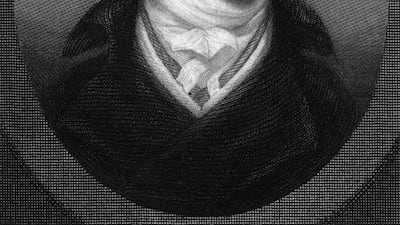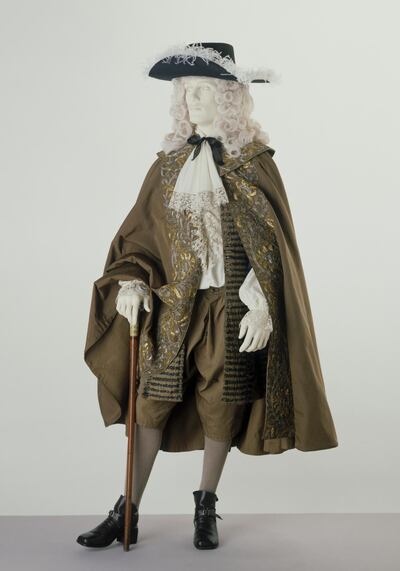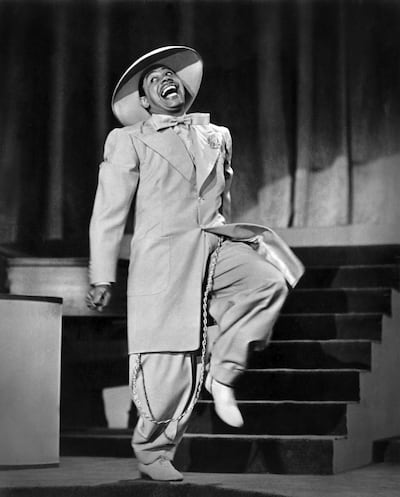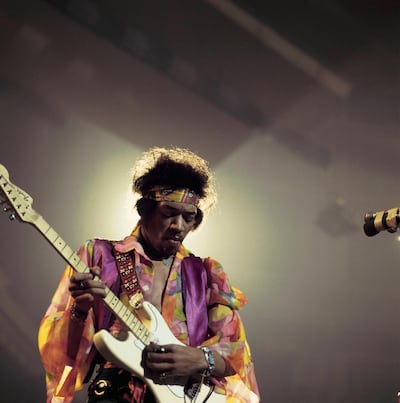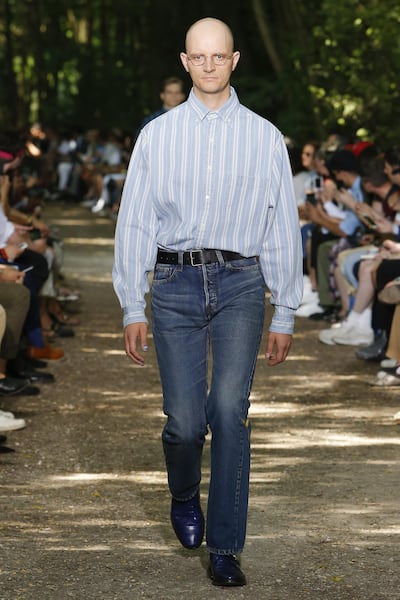When it comes to dressing up, let’s face it, a woman can have a lot more fun than a man. She can wear high or low heels; take her pick from among skirts, dresses, shorts and trousers; opt for men’s tailoring or body-con; and mix and match boho, retro and contemporary styles to hone her fashion identity. She can change her hair with dyes, weaves, and extensions, alter her looks via false eyelashes, contour, blush and lipstick, and even reshape her body with Spanx, waist trainers and push-up bras. She can wear clothes in bright colours or subtle pastels, opt for patterns, stripes or animal prints, and layer up any manner of jewellery she wants, be it multiple earrings, stacked bracelets or between-the-finger rings.
A man, in comparison, has limited options. He has shirts, T-shirts, trousers and shorts, plus jackets, jumpers and, if under age 25, sweatshirts. He can wear a suit as a two- or three-piece, experiment with pocket squares and cufflinks, or push the boat out and wear pleat-fronted tan trousers or a Hawaiian shirt. For most men, however, the palette never really ventures past blue, black, neutrals and grey. Various shoe styles aside, jewellery is a watch and perhaps a ring. And that, my friends, is pretty much it.
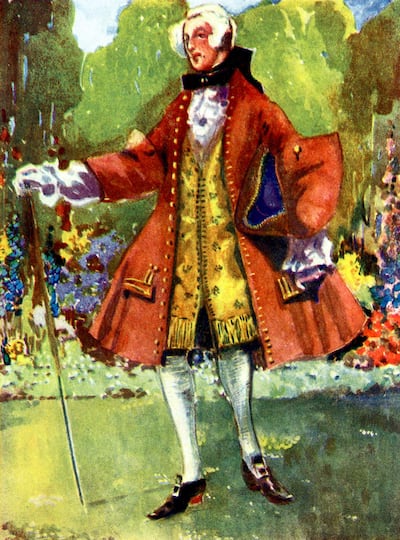
Yet this limited mode of expression is fairly recent. Cast an eye back 200 years, and a well-to-do man swanned about in opulent silks, woven into decadent brocades and jacquards, covered in great swirls of floral embroidery. Hats were big and extravagant (and usually finished with feathers), and lace peeked out of collars, cuffs and from under cravats. Jewellery dripped from earlobes, necks and wrists, and buckles adorned high-heel velvet shoes. Tops were slashed to let contrasting colours show through, while starched woollen coats had full skirts, and dramatic capes swept the floor. A man had different outfits depending on what he was doing, and a gentleman could expect to get changed up to four times a day.
So what happened? How did men's fashion go from these excessive extremes to such a dearth of expression? That is a simple question to answer: Beau Brummell arrived.
Born in Britain in 1778, George Bryan “Beau” Brummell was the grandson of a shopkeeper, and the son of the private secretary to Lord North. Determined to raise his two sons as gentlemen, his father had the boys painted by Joshua Reynolds in 1781, and sent young George to Eton, where his innate sense of elegance quickly emerged. He took to wearing the obligatory white cravat with a gold buckle (earning himself the nickname Buck), and during his short stay at Oxford, he restyled the way he wore the dress code there, too.
At the turn of the 19th century, gentlemen still dressed in the gaudy style of French King Louis XVI. Fully adopted by the British aristocracy, there was no such thing as too ostentatious – and waistcoats and topcoats were stiff with heavy goldwork embroidery. Ribbons, trimmings and shiny gewgaws furnished every edge. Both men and women wore enormous wigs tousled into curls and ringlets. Shoes were four inches high, and far too delicate for actually walking in, and many men took to parading with a tall cane or parasol, as a slow swagger was deemed fashionable.
Of course, such get-ups were ridiculously expensive; the silk alone was imported at high cost from China, not to mention the corsets worn underneath it all, which required the help of several staff to get in to or out of. The delicate nature of the fabrics meant washing them was risky business, and so rarely attempted – a policy that also extended to the wigs and their wearers. Inevitably, everyone crawled with lice, the remedy for which was to drench oneself in white, blue or even pink powder. False beauty spots were all the rage, and some plastered on so many mooches, they looked, in the words of Bill Bryson, "as if they were covered in flies". Skin was rendered fashionably pale with layers of white lead, while eyes were made to look attractively dilated with drops of deadly nightshade.
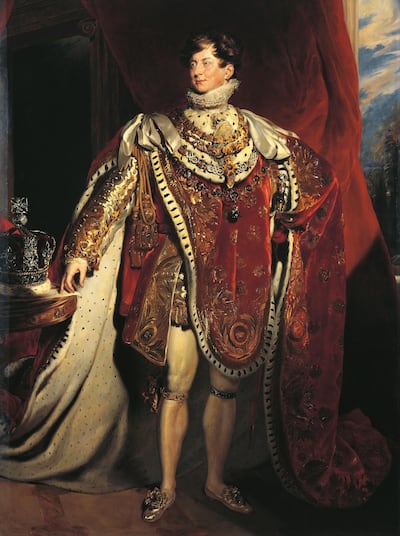
In contrast, Brummell was a man of simple, but immaculate taste. He ignored the moles, jewellery and high-heel shoes, and instead preferred the cut of a well-tailored jacket in simple wool, over the most expensive of fabrics. Ditching the frippery, he wore elegantly fitted, high-waist breeches, tucked into knee-high leather riding boots, and matched with a tan-coloured waistcoat. As his contemporaries tottered about in all manner of ribbons, feathers and fans, Brummell searched for the perfect line, and was fastidious about proportion and cut. He had jackets cut from a wool called Bath Coating, which fit him so beautifully, he made everyone else look overdressed. For the evening, he was known to change into a longer blue jacket, and slim-fit black trousers, cut to the ankle to show off his elegant black slippers. On top of this, Brummell washed and shaved every day, and wore his hair long and loose.
In short, he was a sensation. He looked so refined and sophisticated, even royalty looked shabby in comparison, and he soon came to the attention of the Prince of Wales, George. Acclaimed for his style and wit, and now at the highest level of society, Brummell wielded enormous influence, as men rushed to copy his every move, including, somewhat ironically, the prince Regent himself.
Brummell’s pared-back, monochromatic style is now called dandyism, and linked to gaudy primping, but this is actually rather misleading. Brummell’s dress sense was the exact opposite; what he was guilty of, was perfectionism, and was rumoured to take five hours getting dressed. When asked how much a man should spend on his wardrobe, he replied: “Why, with tolerable economy, I think it might be done with £800.” That’s about Dh250,000 today. On another occasion, Brummell is said to have appraised the outfit of the Duke of Bedford (technically his superior) with the observation: “Bedford, you call this thing a coat?”
Inevitably, however, his withering tongue caught up with him. He quarrelled with the Prince of Wales when the pair met one evening, in the aftermath of which Brummell turned to the prince’s companion and said of the famously rotund royal: “Alvanley, who’s your fat friend?” Brummel’s fall from grace was fairly spectacular. He was ousted from the princely circle, and creditors began to demand settlement of his large debts. Unable to pay, Brummell fled to France in 1816, eventually dying in squalor in Le Bon Sauveur Asylum in 1840.
Yet, Brummell's legacy is still going strong. Thanks to him, men still wear predominately blue, black, brown and tan today. His love of tailoring gave London's Savile Row and Jermyn Street reputations they still carry (Jermyn Street even erected a statue in his honour), and it was Brummell who stripped out colours and patterns from menswear, expelling them from what was deemed "respectable" attire.
So outcast did he make such fashion that, in 1940s America, disaffected African-Americans and Hispanic men marked their anger by donning hugely oversized, brightly coloured suits in the so-called Zoot Suit riots. Incidentally, the suits caused so much offence, that predominately white crowds would deliberately slash at the fabric with razor blades. During the anti-war movement of the 1960s, meanwhile, people chose as their protest attire brightly coloured, loose-fitting clothes, and grew out their hair and beards.
Today, the only men really given carte blanche to experiment with nonBrummellian styles are fashion designers, musicians, actors and Instagrammers. Think of Gucci’s Alessandro Michele, musicians David Bowie, Jimmy Hendrix and Adam Ant, and influencer Luka Sabbat, who are all known for their unique and creative dress sense. Outside of these fields, however, men who like to experiment (including my father, who dresses exclusively in bright blue and green) are simply called eccentric.
Arguably, the men who do throw off convention and wear what they feel like are actually being faithful to what Beau Brummell was trying to do. Horrified at the lack of choice and the sheep mentality of the 1800s, Brummell simply came up with an alternative. Yet somehow this attempt to break down boundaries has itself been adopted as a uniform, to which men still rigidly stick almost 200 years later. Perhaps they find the limited styles of the clothes on offer less demanding; possibly the restricted palette is easier to choose from; and maybe not everyone can pull off a pistachio waistcoat embroidered with flowers.
As women, we may mourn the lack of periwinkle watered silks in our men’s wardrobes, and regret the absent velvet-trimmed cuffs and hats, but men, it seems rather enjoy the Brummell-inspired simplicity. After all, not much can go wrong with navy blue.
